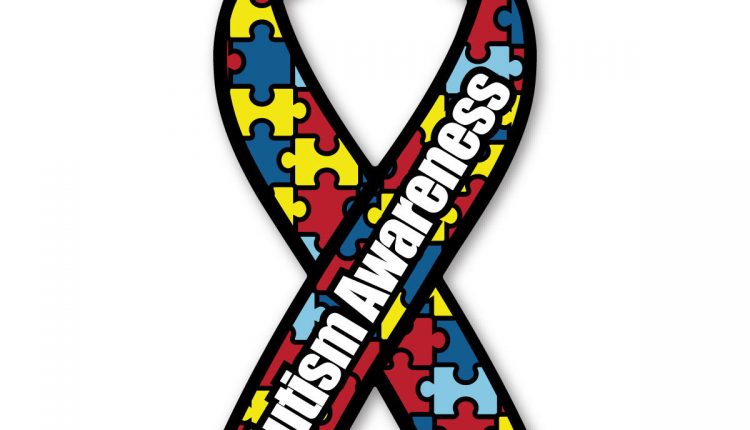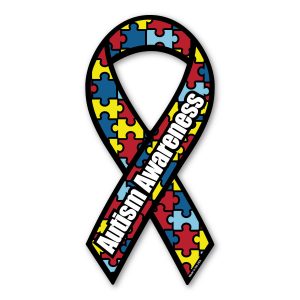
National Autism Month shifts focus from awareness to acceptance
Autism Awareness Month has been recognized since 1970 every April, with April 2 being national Autism Day. Autism spectrum disorder (ASD), refers to a broad range of conditions characterized by challenges with social skills, repetitive behaviors, speech and nonverbal communication. The Center for Disease Control (CDC) states that autism affects an estimated 1 in 59 children in the United States today. There is not one form of autism but many subtypes, most influenced by a combination of genetic and environmental factors.

Because autism is a spectrum disorder, each person with autism has a distinct set of strengths and challenges. Several factors may influence the development of autism, and it is often accompanied by sensory sensitivities and medical issues. Indicators of autism usually appear by age 2 or 3. Some associated development delays can appear even earlier and, often, it can be diagnosed as early as 18 months. Research shows that early intervention leads to positive outcomes later in life for people with autism.
Reid Caplan, associate director of advocacy and development at Autistic Self Advocacy Network (ASAN), stated that while awareness is great, acceptance should be part of the message as well.
“I would like to think that everyone already knows about autism, that we are done with awareness, but I know this isn’t true,” Caplan said. “I would also like to think that acceptance is a given, that our society accepts all people with disabilities, but I know first hand that this isn’t true, either. Awareness and acceptance are both important parts of the message.”
ASAN has been leading a campaign for the past few years to emphasize the importance of moving from autism awareness to autism acceptance and renaming April Autism Acceptance Month as part of this movement. In support of this community-wide effort, ASAN has created a dedicated website for Autism Acceptance Month.
“It provides unique programming every April focused on promoting acceptance and inclusion and changing the dialogue about autism from fear, pity and tragedy to support, empowerment and most importantly acceptance,” Caplan said.
Here at UHCL, Dorothea Lerman, professor of psychology, serves as the director at the Center for Autism and Developmental Disabilities (CADD). CADD offers a variety of programs that serve individuals across the lifespan. Very few autism centers provide such a broad range of services to the community, including parent and teacher training, early intervention, vocational training, and school consultation.
“We provide treatments for problem behavior, interventions to improve communication and social skills, and even support for college students with autism,” Lerman said. “We even provide services to families across the globe. No one else in the world is doing this. It is a one-of-a-kind program!”
Lerman stated that while there is no absolute cure for autism, through acceptance individuals with autism can learn to live more independently and increase the likelihood of their success.
“As a society, we need to be more tolerant of differences, so I think that the shift from awareness to acceptance is important,” Lerman said. “Individuals with autism have a lot of trouble obtaining and maintaining employment because of a lack of acceptance and tolerance of these differences on the job sites; they are often exceptional employees but may be socially awkward in ways that make others uncomfortable.”
Lerman said that by emphasizing acceptance it is important that the shift in terminology is not interpreted as a lack of need for treatment.
“For many individuals with autism, treatment will increase the likelihood that they lead happier, healthier, more productive lives,” Lerman said. “We should not create any barriers to treatment; in fact, it should be encouraged.”
Acceptance is key in ending autism stigma, Lerman explained. Many people assume that individuals with autism do not like to interact with others and prefer to be alone.
“Although many individuals with autism avoid social situations, they often do so because they don’t know how to interact with others,” Lerman said. “Many of them actually desire to have friends and relationships and experience feelings of loneliness and isolation if they spend a lot of time alone.”
CADD has a program on campus called Connecting to College, which provides Autism Allies training each semester to faculty, staff and students. The center also hosts a monthly speaker series. These services are provided at no cost to students or families and are encouraged for all of the UHCL community.
Cory Schaub, graphic design major who also competes in men’s bodybuilding, was first diagnosed with autism at 5 years old. Schaub, who has been bullied physically and mentally said that no matter what disability or obstacle one has one should not be treated differently.
“I don’t define myself as someone with a disability, I define it as a way to challenge myself to go above and beyond what is expected of me,” Schaub said. “I was never expected to make it out of first grade, but look at me now. I did it because people told me I couldn’t. Never give up, dream big and reach for the stars.”
CORRECTION: 5/2/20 – Cory Schaub’s last name was corrected in spelling.
For more information of Autism Awareness:
INFOGRAPHIC: Notable people on the autism spectrum
Since then, the diagnosis rate of children with autism in the U.S. has grown from 1 in 2,000 to 1 in 59, the CDC reports, making it the fastest growing developmental disability in the world.
